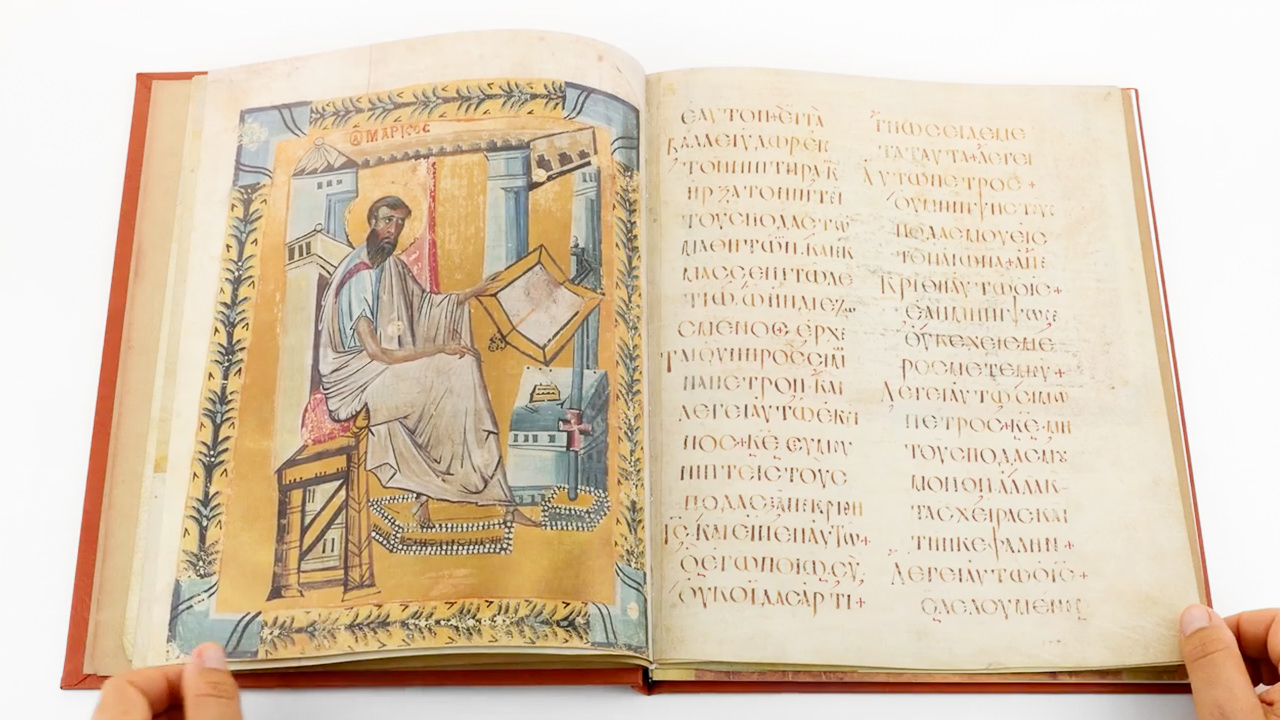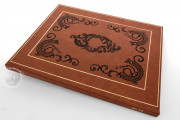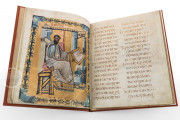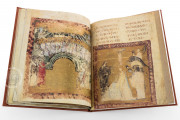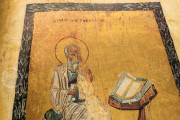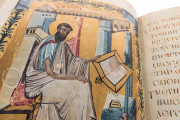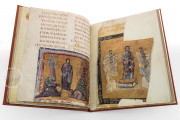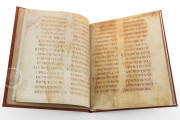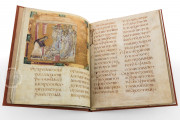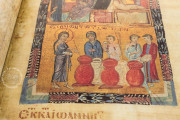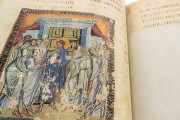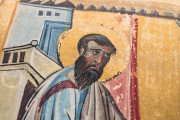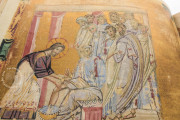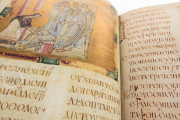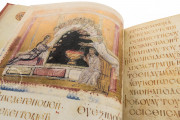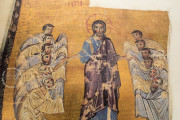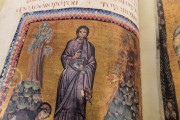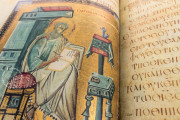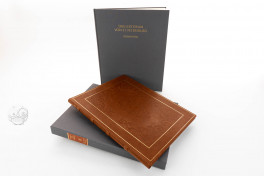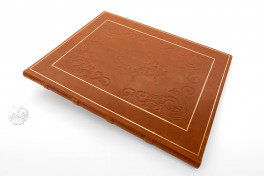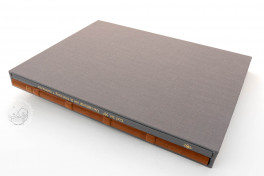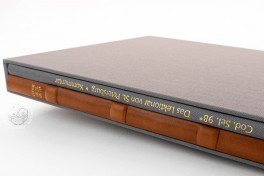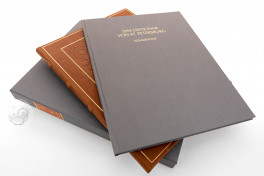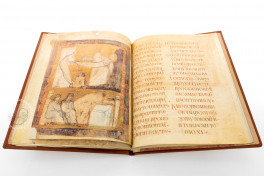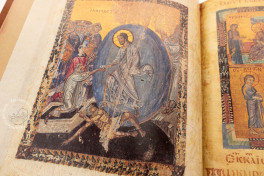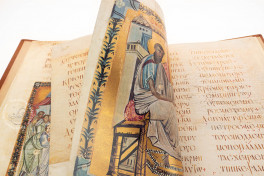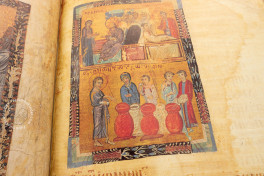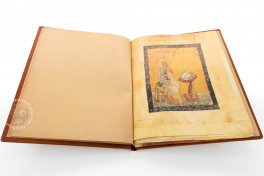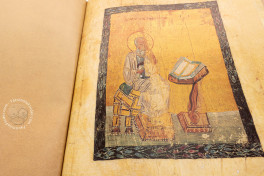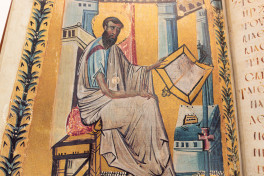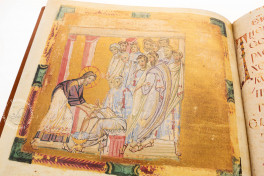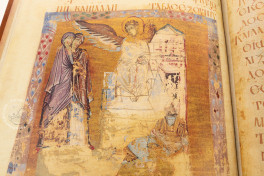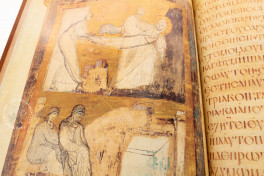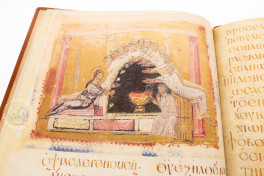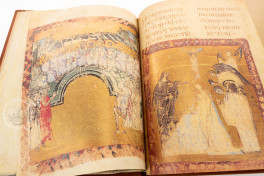The Gospel Lectionary of Trebizond, which dates from the second half of the tenth century, is an important example of Byzantine manuscript illumination. It may have been made in the Eastern Roman imperial capital of Constantinople, but there is no scholarly consensus. Also known as the Golden Gospels due to the generous use of gold, the book is an early example of an illuminated lectionary featuring an extensive cycle of miniatures.
The Greek text, unfortunately fragmented, is a collection of passages from the biblical accounts of the life of Christ arranged for use as readings in the liturgy of the Mass. The book's miniatures include portraits of the authors of the Gospels and illustrations of the episodes described in the Gospel readings or of events in the life of the Church.
Monumental Miniatures
Nestled in foliate and geometric frames, the miniatures of the lectionary—six of which occupy a full page—are crucial witnesses to early lectionary pictorial cycles. Sixteen miniatures have survived, and there were at least twelve more in the original codex.
The Harrowing of Hell
Among the full-page miniatures, the representation of the Harrowing of Hell—known as the Anastasis in Greek—provides a fine example of the manuscript's aesthetic (fol. 1v). The scene is dominated by the blue mandorla—an oval aureole—that surrounds the resurrected Christ, which works together with the gold background to emphasize the spiritual dimension of the depicted event. The figure of Christ appears almost weightless as he treads lightly on the personification of Hell below.
Written in Constantinople?
While the decidedly anti-classical style of the miniatures has led some scholars to postulate a "provincial" origin, the fine liturgical majuscule script suggests an origin in Constantinople. The manuscript's scribe, or someone whose writing is very similar, wrote another manuscript made in Constantinople (Moscow, State Historical Museum of Russia, MS Syn. gr. 226).
Piecing the Fragments Together
It is unknown who commissioned the manuscript. The presence of gold and the quality of the painting suggest that it was produced for a high-ranking person. Only a fragment of the manuscript's original splendor survives. Fourteen leaves of the opulent lectionary were bound into an eleventh-century lectionary sometime in the thirteenth century.
In 1858, the composite manuscript was presented to Tsar Alexander II (1818-1881) by the Metropolitan Constantios of Trebizond. When the book entered the Imperial Public Library in the same year, the tenth-century leaves were extracted and rebound. Another leaf from the original lectionary was purchased by the library in 1902 from Athanasius Papadopoulos-Kerameus (1856-1912). In 1918 the Imperial Public Library was renamed the Russian Public Library, known from 1932 to 1937 as the Saltykov-Shchedrin State Public Library, and now the National Library of Russia.
We have 2 facsimiles of the manuscript "Gospel Lectionary of Trebizond":
- Das Lektionar von St. Petersburg facsimile edition published by Akademische Druck- u. Verlagsanstalt (ADEVA), 1994
- Das Lektionar von St. Petersburg facsimile edition published by Akademische Druck- u. Verlagsanstalt (ADEVA), 1994

